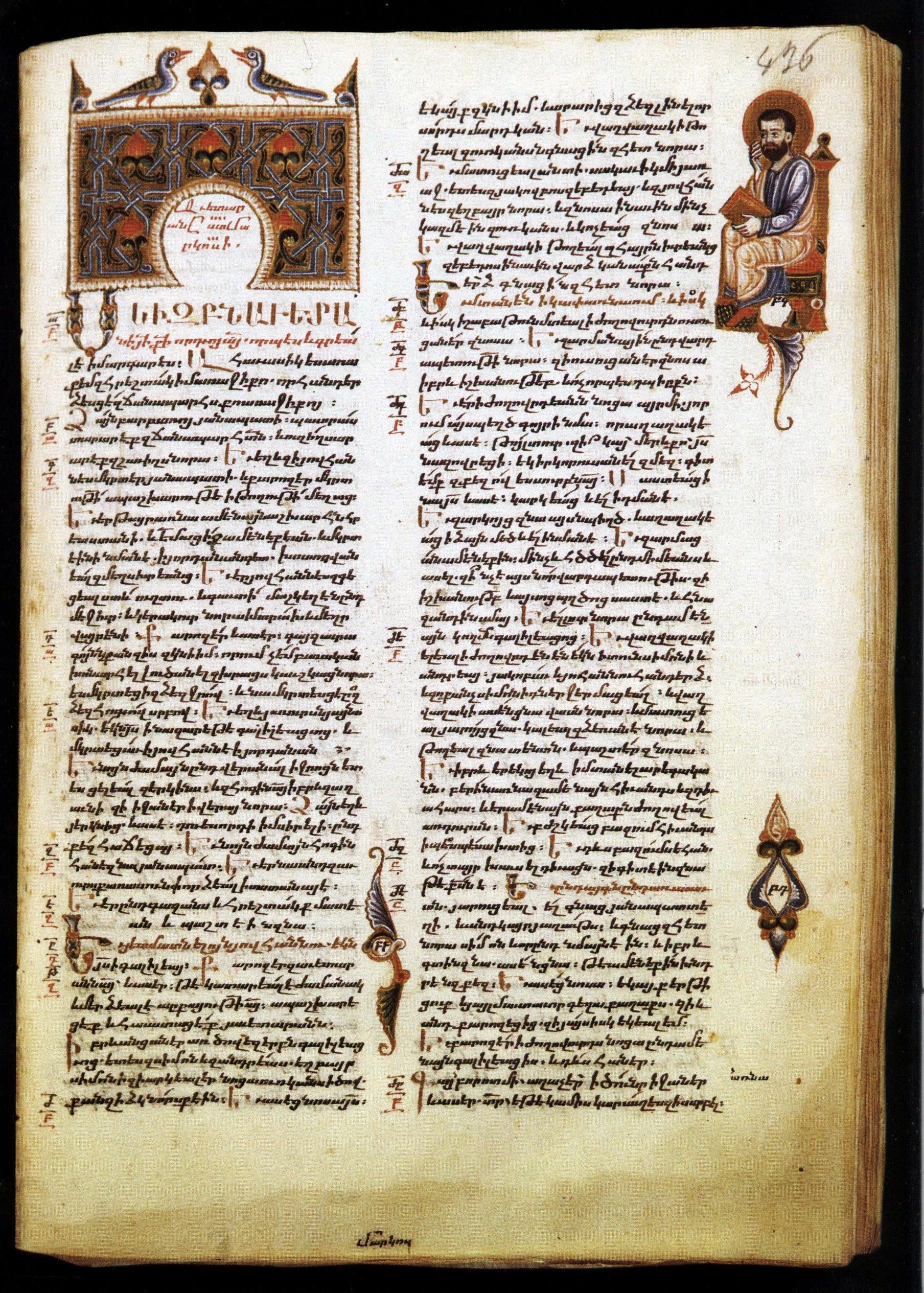|
Minuscule 497
Minuscule 497 (in the Biblical manuscript#Gregory-Aland, Gregory-Aland numbering), ε 1125 (in the Biblical manuscript#Von Soden, Soden numbering), is a Greek language, Greek Lower case, minuscule manuscript of the New Testament, on parchment. Palaeography, Palaeographically it has been assigned to the 11th-century. Scrivener labelled it by number 583. The manuscript has marginalia. It has survived in complete condition. Description The codex contains the complete text of the four Gospels on 184 parchment leaves (size ). The text is written in one column per page, 22-23 lines per page, in very small hand. The text is divided according to the (''chapters''), whose numbers are given at the margin, and the (''titles of chapters'') at the top of the pages. There is also a division according to the Ammonian Sections, with references to the Eusebian Canons. It contains the Epistula ad Carpianum, Eusebian Canons#The Eusebian Tables, Eusebian tables, prolegomena, subscriptions at t ... [...More Info...] [...Related Items...] OR: [Wikipedia] [Google] [Baidu] |
Gospel
Gospel originally meant the Christian message (" the gospel"), but in the 2nd century it came to be used also for the books in which the message was set out. In this sense a gospel can be defined as a loose-knit, episodic narrative of the words and deeds of Jesus, culminating in his trial and death and concluding with various reports of his post-resurrection appearances. Modern scholars are cautious of relying on the gospels uncritically, but nevertheless, they provide a good idea of the public career of Jesus, and critical study can attempt to distinguish the original ideas of Jesus from those of the later authors. The four canonical gospels were probably written between AD 66 and 110. All four were anonymous (with the modern names added in the 2nd century), almost certainly none were by eyewitnesses, and all are the end-products of long oral and written transmission. Mark was the first to be written, using a variety of sources. The authors of Matthew and Luke both indepe ... [...More Info...] [...Related Items...] OR: [Wikipedia] [Google] [Baidu] |
Categories Of New Testament Manuscripts
New Testament manuscripts in Greek are categorized into five groups, according to a scheme introduced in 1981 by Kurt Kurt is a male given name of Germanic or Turkish origin. ''Kurt'' or ''Curt'' originated as short forms of the Germanic Conrad, depending on geographical usage, with meanings including counselor or advisor. In Turkish, Kurt means "Wolf" and is ... and Barbara Aland in ''The Text of the New Testament''. The categories are based on how each manuscript relates to the various text-types. Generally speaking, earlier Alexandrian manuscripts are category I, while later Byzantine manuscripts are category V. Aland's method involved considering 1000 passages where the Byzantine text differs from non-Byzantine text. The Alands did not select their 1000 readings from all of the NT books; for example, none were drawn from Matthew and Luke. Description of categories The Alands' categories do not simply correspond to the text-types; all they do is demonstrate the 'B ... [...More Info...] [...Related Items...] OR: [Wikipedia] [Google] [Baidu] |
Greek New Testament Minuscules
Greek may refer to: Greece Anything of, from, or related to Greece, a country in Southern Europe: *Greeks, an ethnic group. *Greek language, a branch of the Indo-European language family. **Proto-Greek language, the assumed last common ancestor of all known varieties of Greek. **Mycenaean Greek, most ancient attested form of the language (16th to 11th centuries BC). **Ancient Greek, forms of the language used c. 1000–330 BC. **Koine Greek, common form of Greek spoken and written during Classical antiquity. **Medieval Greek or Byzantine Language, language used between the Middle Ages and the Ottoman conquest of Constantinople. **Modern Greek, varieties spoken in the modern era (from 1453 AD). *Greek alphabet, script used to write the Greek language. *Greek Orthodox Church, several Churches of the Eastern Orthodox Church. *Ancient Greece, the ancient civilization before the end of Antiquity. * Old Greek, the language as spoken from Late Antiquity to around 1500 AD. Other uses * ' ... [...More Info...] [...Related Items...] OR: [Wikipedia] [Google] [Baidu] |
Textual Criticism
Textual criticism is a branch of textual scholarship, philology, and of literary criticism that is concerned with the identification of textual variants, or different versions, of either manuscripts or of printed books. Such texts may range in dates from the earliest writing in cuneiform, impressed on clay, for example, to multiple unpublished versions of a 21st-century author's work. Historically, scribes who were paid to copy documents may have been literate, but many were simply copyists, mimicking the shapes of letters without necessarily understanding what they meant. This means that unintentional alterations were common when copying manuscripts by hand. Intentional alterations may have been made as well, for example, the censoring of printed work for political, religious or cultural reasons. The objective of the textual critic's work is to provide a better understanding of the creation and historical transmission of the text and its variants. This understanding may lead ... [...More Info...] [...Related Items...] OR: [Wikipedia] [Google] [Baidu] |

